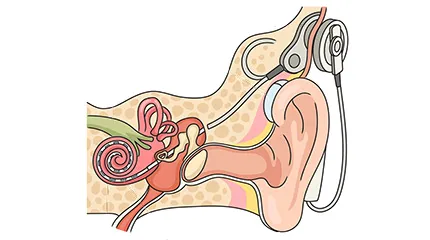Robotic-Assisted Cochlear Implants: Transforming Hearing Loss Treatment

Advancements in cochlear implant technology, particularly with robotic assistance, are making significant strides in improving hearing care. Patients are regaining their hearing and enhancing their quality of life.
If you or a loved one is struggling with hearing loss, you’re not alone. Hearing loss is more common than many realize. It’s currently the third leading chronic health condition in the U.S. By 2050, experts predict that one in four people will experience hearing problems.
Despite advancements in awareness, many people who could benefit from a cochlear implant never receive one. In fact, only about 5% of those who qualify for a cochlear implant get one, leaving a large number of individuals underserved.
Hearing loss isn’t just about missing conversations, it can have serious health impacts. Research has linked untreated hearing loss to an increased risk of dementia, making it even more important to explore all available treatment options.
The good news? Cochlear implants are helping many people regain access to sound and improve quality of life.
What Is a Cochlear Implant and How Is It Different than a Hearing Aid?
A cochlear implant consists of two parts – an external processor that is worn outside of the ear and a surgically implanted internal portion. This device enables individuals with hearing loss to perceive speech and sound. Sound is converted into a digital signal that travels through the implant to stimulate the hearing nerve. Hearing aids amplify sound while cochlear implants can restore sound. Sometimes, hearing aids are used in tandem with cochlear implants.

Is a Cochlear Implant Right for You?
It may be the right time to talk to a doctor to see if a cochlear implant evaluation is right for you. Here are a few considerations:
- My hearing aid isn’t working for me anymore.
- I need to lip-read.
- I turn the TV volume on a loud setting.
- Hearing in busy environments can be challenging.
- I avoid using the telephone.
- My hearing loss has affected my confidence.
- I often ask my friends and family to repeat themselves.
Robotic-Assisted Technology Advances Cochlear Implant Care
Until now, traditional cochlear implant surgery relied on manual insertion. With robotic assistance, surgeons can now insert the implant array at very slow speeds, often slower than the human hand can achieve. This reduces trauma to the cochlea.
Robotic assistance is designed to maximize surgical outcomes and preserve the delicate structures within your cochlea. It gives your surgeon enhanced control during surgery to levels beyond the capability of a human hand.
Note: The content of this blog is for informational purposes only. It is not intended for use as diagnosis or treatment of a health problem or as a substitute for the professional consultation of a physician or qualified health care provider. If you have specific questions or concerns regarding a health or medical condition, contact your physician or a licensed health care professional.



